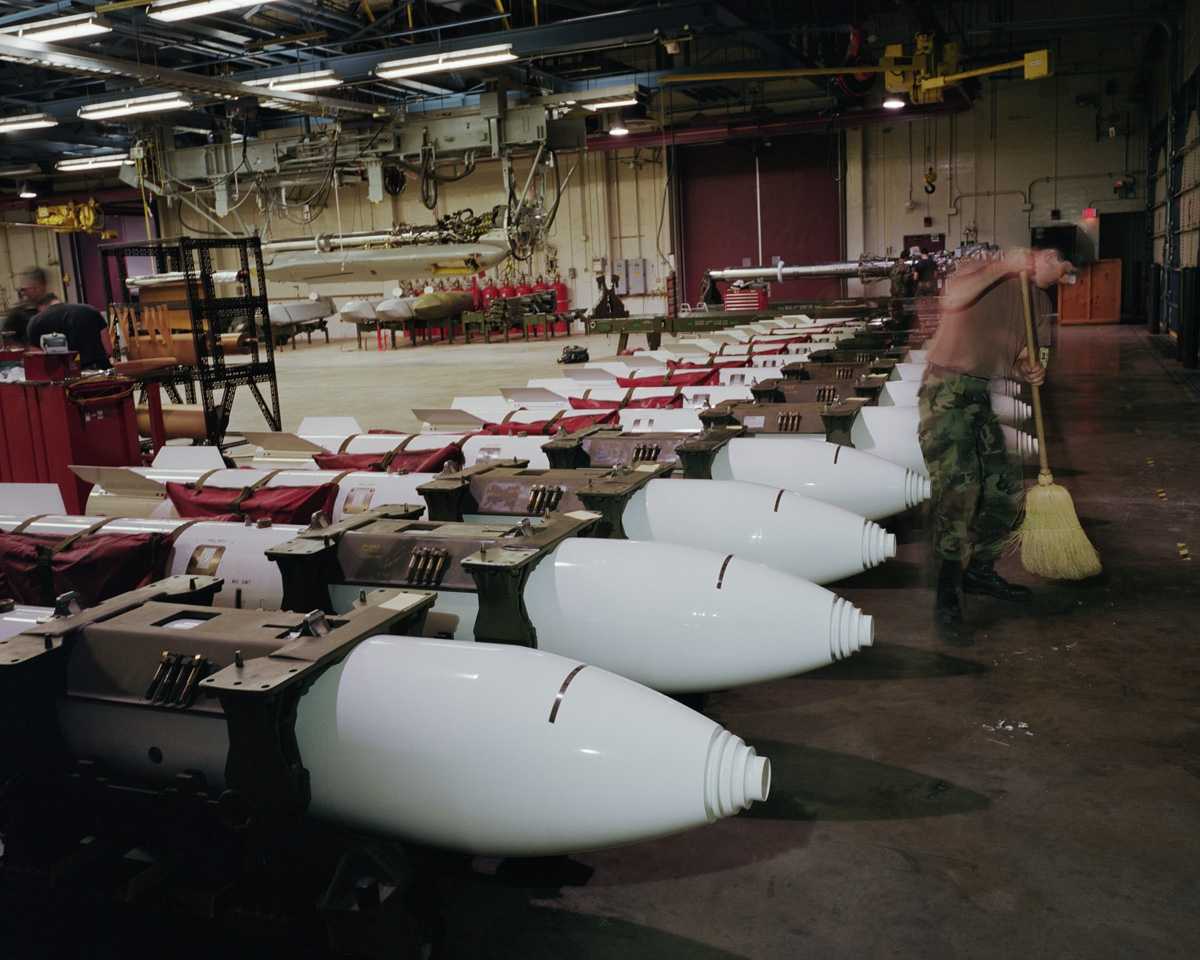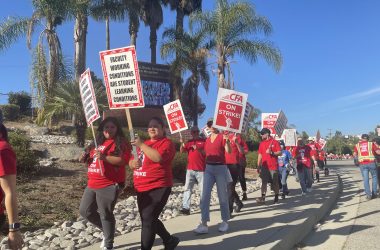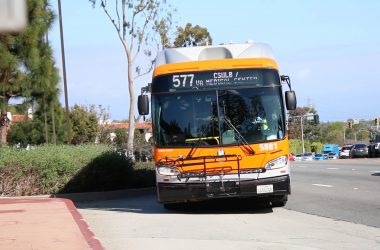Photographs of some of the most restricted areas and places in the United States hang on the stark, white gallery walls of the Cal State Long Beach University Art Museum.
Paul Shambroom’s “Picturing Power” exhibit in the UAM displays portraits that capture stoic faces masked in hazardous material, assembly line workers, the inside of empty boardrooms, nuclear weapon storage sites and city council meetings.
Shambroom’s photography examines and explores the impact of power in the U.S. Some of his images are shocking and foreign; it is not everyday that photos of submarine control rooms or of B83 one-megaton nuclear gravity bombs are shown to the public.
“The exhibit challenges the notion of the portrait of America today,” said Christopher Scoates, co-curator of the exhibit and director of the UAM.
Shambroom’s style is that of a documentary photographer. His images are of places that most people will never see, unless sought after through one’s own personal investigation.
According to the Shambroom’s statement for this series of photographs, his goal was not to criticize or glorify power, but to reveal a harsh hidden reality.
This is Shambroom’s first exhibit that brings together works from five of his most important and highly acclaimed series. His most current series is “Security,” which is a collection of photographs of personnel training facilities, equipment and training grounds like “Terror Town” and “Disaster City” in Texas. This work examines the fear and safety issues post-Sept. 11.
The “Factories and Office” series includes corporate buildings like Control Data Corporation in Minnesota and big-name factories like Ford Motor Company as examples of big corporations that hold power in the United States.
For the “Meetings” series, Shambroom attended and photographed public municipal meetings in small towns with populations lower than 2,000. All of the images were very similar, portraying expressionless faces of men and women sitting at desks covered by the American flag with placards of their official titles. These photographs illustrate how public officials, like city council and village councils, hold power over their own citizens.
“Nuclear Weapons” captures highly restricted areas in U.S. military bases. Pictures of nuclear bombs, silos and storage areas are a scary reminder that the U.S. is a powerful nuclear power.
“I think it’s cool. You can see so much detail in the photos,” said Michael Johnson, a junior fashion design major. “There is feeling in them; it looks like they’re popping out of the picture.”
Scoates shared the process and inspiration for the exhibit.
“I started working on this project four years ago with my friend from the Weisman,” he said.
He and his friend raised funds and the consortium grant allowed them to start the project.
Scoates and his colleagues became very interested in Shambroom’s vision and started investigating his work in 1997 at the Whitney Museum of American Art, a gallery in New York.
“It’s like when you hear a song you like by a band that you know nothing about. You start looking into them, following what they do — that’s how we came upon Paul’s work,” Scoates said. “His work pulls together ideas around a certain theme that we were really interested in.”
Over the four years, Scoates has traveled several times to Minneapolis, where Shambroom now lives and works.
“We worked directly with Paul during all the planning,” Scoates said.
Andres Herrera, a student employee at the UAM, said, “There has been a steady flow of people coming to see the exhibit in the past three and a half weeks it’s been open.”
CSULB is the last stop on the tour. The exhibit opened at CSULB on Jan. 22 and will run until April 5. The exhibit will be closed from March 17 to 24 for a private event at the UAM.




